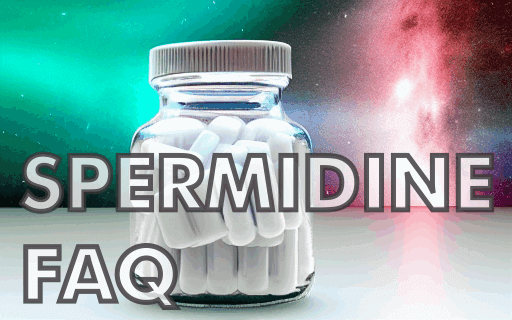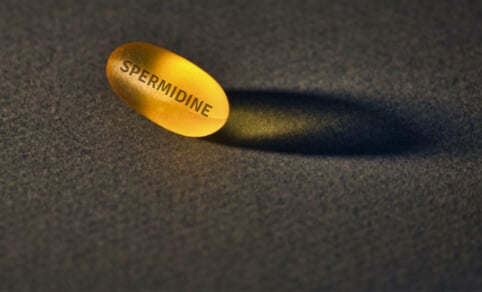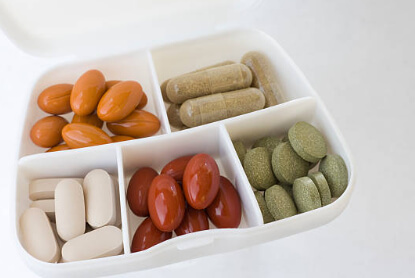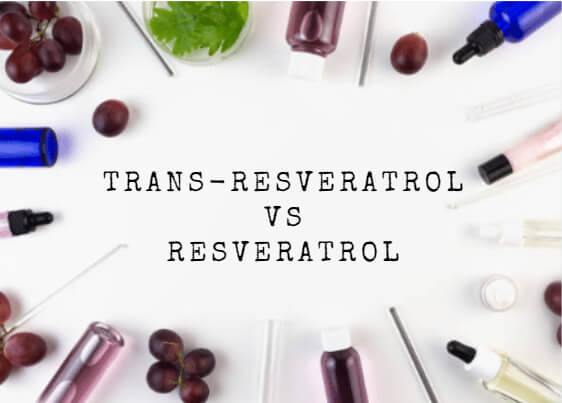Spermidine Questions and Answers
(The following information was obtained from the scientific article, Science v.359 2018, which remains as one of the best and most comprehensive Spermidine review articles published thus far. We summarize the information of this article by asking the most relevant questions for customers interested in purchasing Spermidine. When relevant, we also attached scientific references to make it easier for our customers to search for any specific details about this amazing natural compound.)
What is Spermidine?
Spermidine is a naturally occurring polyamine that is essential for normal physiological function. Spermidine belongs to a group of molecules composed of short carbon chains that also have at least two nitrogen groups called amines, hence the name polyamine. As we get older the amount of Spermidine in our body declines. The decline remains somewhat of a mystery given that our body can obtain Spermidine from three different sources. .
First, our own cells can make Spermidine but not surprisingly as we get older, like many other functions, our body simply stops being able to generate the same amount throughout our life.
Second, we have in our intestinal tract bacteria flora that can generate Spermidine that we can then absorb. However, similar to our aging body, bacteria flora changes as we age and it is likely that these changes lead to deficient levels of Spermidine production.
Third, Spermidine is found in our diet in various foods that we consume. Therefore, a healthy diet should provide us with enough Spermidine. However, it is difficult to always maintain a rigid diet rich in Spermidine that can provide us the correct amounts required by our body to function properly.
Therefore, supplementing our diet with Spermidine has gained attention as an attractive solution to our declining levels of Spermidine.
How important is Spermidine?
Spermidine is a critically important molecule. Let’s put this in perspective. The more important a molecule is the more widespread it is found in nature. Think of DNA, all living organism have DNA. Polyamines can also be found in all living organisms, ranging from bacteria, plants to humans. Polyamines are essential for cell growth, cell proliferation, tissue regeneration, they stabilize DNA and RNA, they have antioxidant activities, they modulate enzyme functions, they modulate protein translation, they affect apoptosis. Keep in mind, this growing list of functions are all cellular functions, and we are the sum of all these cellular functions.
Collectively, at the organ level and organismal level, Spermidine has been shown to help reduces age-related Cardiovascular diseases, neurodegenerative diseases, autoimmunity, Cancers and reduces age- related memory impairment. (See below for the specifics health benefits that have been documented on Spermidine research.)
Why is Spermidine called a caloric restriction mimetic?
Caloric restriction is defined as the reduction of calorie intake while maintaining a balanced nutrition. Caloric restriction remains the most wildly studied strategy for extending lifespan (and reducing age-related pathologies) in all tested organisms ever studied. Based on these countless studies on caloric restriction, patterns on treated organisms that live longer have emerged such as reduction in Cardiovascular diseases, Diabetes, Cancer and so on. In other words, caloric restriction also reduces age-related pathologies while extending lifespan. Patterns at the cellular level for calorie restriction which informs us of how calorie restriction works have also emerged. Examples at the cellular level include increased autophagy or deacetylation of molecules to list but a few. Based on these caloric restriction observations, compounds such as rapamycin, resveratrol and spermidine, imitate the cellular effects of caloric restriction by affecting autophagy or deacetylation of internal molecules, therefore these compounds are viewed as mimetics of caloric restriction. It comes as a no surprise then that Spermidine like caloric restriction, reduces the incidence of many age-related pathologies. Pharmacological strategies for extending lifespan by consuming Spermidine or in combinations of other caloric restriction mimetic compounds are viewed as a feasible approach for obtaining the benefits of calorie restriction while avoiding the strict diet.
What are the specific health benefits of Spermidine?
There are many questions remaining about how Spermidine works, however, much has been learned about the health benefits of Spermidine. The following is a long list of studies on the health benefits of Spermidine (and in the interest of full disclosure, these studies involve not just humans but also other organismal models, we attached links to the references in case you may want to read more on these specific subjects).
• Diets rich in Spermidine extend life and fitness (1)
• Spermidine improves autophagy and is required for life extension (2)
• Spermidine reduces age-associate changes to the circadian rhythm (3)
• Spermidine was observed to reduce osteoporosis (4)
• Spermidine reduces Tumor formation, it reduces liver cell fibrosis and carcinomas (5)
and slows the growth of colorectal Cancers (6)
• Spermidine increases antiCancer immune response (7)
• Spermidine reduces both diastolic and systolic blood pressure (8)
• Spermidine alleviates atherosclerosis plaques (9) and reduces age-induced arterial
stiffness (10)
• Spermidine reverses aga-associated defects in autophagy for muscle stem cells
preventing senescence and regenerating muscle (11)
• Spermidine improved the function of mitochondria in cardiac muscles (12)
• Spermidine prevented the buildup of fat cells (adipocytes) and improved glucose
tolerance (13)
• Spermidine induced autophagy was required for weight loss and counteracted weight
gain (14)
• Spermidine in experimental organismal models stops encephalomyelitis, a model for
Multiple Sclerosis (15)
Links to References
1) doi: 10.1016/j.exger.2009.08.013;
2) doi: 10.1158/0008-5472.CAN-16-3462;
3) doi: 10.1016/j.cmet.2015.09.011;
4) doi: 10.1111/j.1476-5381.2012.01856.x;
5) doi: 10.1158/0008-5472.CAN-16-3462;
6) doi: 10.1038/ncomms11716;
7) doi: 10.1016/j.ccell.2016.05.016;
8) doi: 10.1038/nm.4222;
9) doi: 10.1016/j.atherosclerosis.2016.07.899;
10) doi: 10.1016/j.mad.2013.04.004;
11) doi: 10.1038/nature16187;
12) pmid: 28407698
13) doi: 10.1016/j.ejphar.2014.01.073
14) doi: 10.1038/cddis.2017.373;
15) doi: 10.1167/iovs.10-6015;








